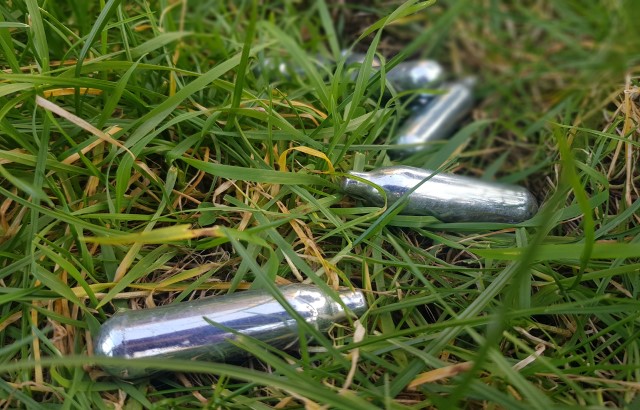Young people with nerve damage from nitrous oxide use are most likely to be Asian men
Researchers from Queen Mary University of London speculate that social factors and genetic susceptibility may contribute to the predominance

The largest clinical study to date of recreational users of nitrous oxide has found that young men of Asian ethnicity are overrepresented in those presenting to hospitals for neurological side effects from nitrous oxide use.
This may indicate a genetic susceptibility to the nerve damage caused by regular exposure to the gas, or other, as yet unidentified, social factors, suggest the researchers in their paper published online in the Journal of Neurology, Neurosurgery & Psychiatry.
Nitrous oxide (commonly known as ‘laughing gas’) is widely used as a painkiller in medicine and dentistry. It is also the second most commonly used recreational drug among 16- to 24-year-olds in the UK. Its use is associated with spinal cord and peripheral nerve damage (myeloneuropathy) in some people, but this is mostly based on small studies.
To strengthen the evidence base, researchers led by Queen Mary University of London studied a series of 119 young people with probable (39) or confirmed (80) myeloneuropathy caused by laughing gas use, all of whom were seen at hospitals between 2014 and 2022 in three of the UK’s largest cities: London (56), Birmingham (35), and Manchester (28).
Nearly half of these cases (57) were seen within the last 12 months of the study period.
Overall, the median age of cases was 22, but ranged from 14 to 39, and 3 out of 4 were male, although a third of the patients in east London were female.
The most common presenting symptom (101; 85%) was paraesthesia (numbness or pins and needles) in the arms and legs, caused by spinal cord and peripheral nerve damage, seen on MRI imaging. The legs tended to be more commonly affected than the arms. Neurological examinations revealed unsteady walking (sensory gait ataxia) in 80 patients.
Additional symptoms included bladder (21) and bowel (18) difficulties, pseudoathetosis (13), Lhermitte’s sign – an electric shock sensation that runs down the spine on moving the neck – (10), and erectile dysfunction (7). Other less common symptoms included memory and speech problems, visual disturbances and nausea/vomiting. Most patients were of Asian or Asian British ethnicity (57%; 68), with the highest proportion in east London (73%; 41). Black patients made up 7.5% of the total; mixed race 6%, and White 19%.
Given the census data on ethnicity for the three areas, the researchers note:
“Asian or Asian British individuals presenting with [nitrous oxide]-related harm appear to be over-represented relative to the proportion of the population that is Asian or Asian British in each region.”
This “may highlight genetic, dietary, or nutritional predispositions to neurological damage from [nitrous oxide] exposure, but also may indicate social circumstances predicating use,” they suggest, adding that these factors warrant further investigation. Importantly, a majority of patients had no documented involvement in education or employment (70; 59%) suggesting that users may be more marginalised in society.
Nerve damage from nitrous oxide is thought to occur through inactivating vitamin B12, preventing the formation of myelin on nerve cells. Weekly nitrous oxide consumption correlated with increased methylmalonic acid. This marker indicates that B12 is not functioning normally, highlighting that this is not a simple deficiency of B12 causing nerve damage, but a functional deficiency - meaning there may be enough B12 in the body but it is not working properly. Intramuscular injections of the vitamin are the mainstay of treatment, although B12 injections are thought to only be effective if use of nitrous oxide also stops.
The research emphasises that this “preventable neurological harm from [nitrous oxide] abuse is increasingly seen worldwide” and that the “ease of access to canisters and larger cylinders…has led to an apparent rise in cases of [nitrous oxide]-myeloneuropathy in several areas of the UK”.
Due to the importance of prevention, researchers in this group set up N2O: Know the Risks, a campaign raising awareness among young east Londoners through workshops on the neurological risks of nitrous oxide.
The UK government has recently banned the sale of laughing gas for public use. However, the researchers believe that careful thought should be given to policy directed at users, who may already be disadvantaged in terms of education and employment.
Devan Mair, fourth year medical student at Queen Mary who leads the ‘N2O: Know the Risks’ campaign and first author of the paper said:
“While the study shows a high number of Asian individuals are affected, the influence of social factors on this must be appreciated alongside any possible genetic or dietary factors.
Legislation to control sales of nitrous oxide is important, however, criminalisation of nitrous oxide could further marginalise users, in turn prolonging the time taken to present with symptoms and so exacerbating neurological harm.”